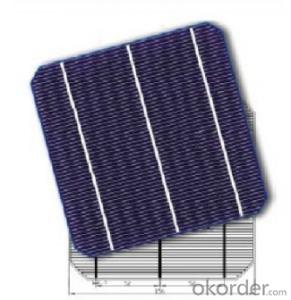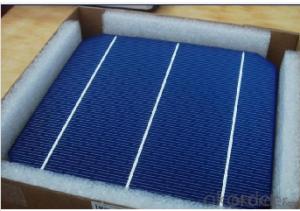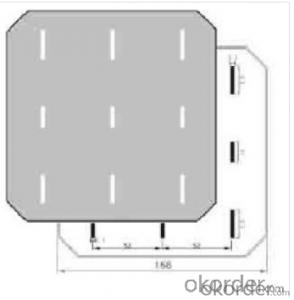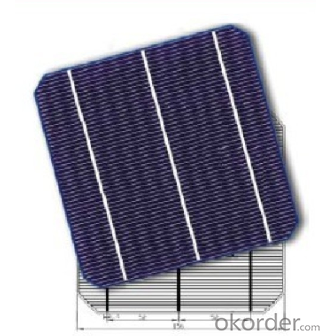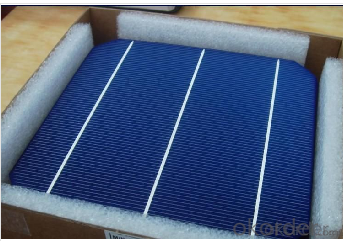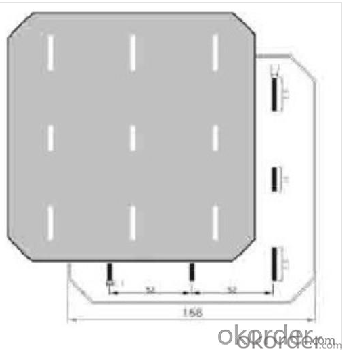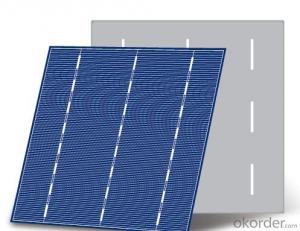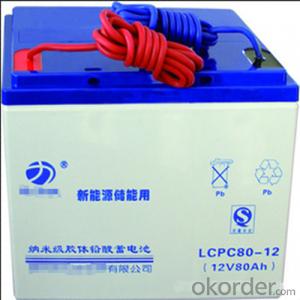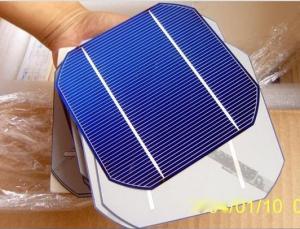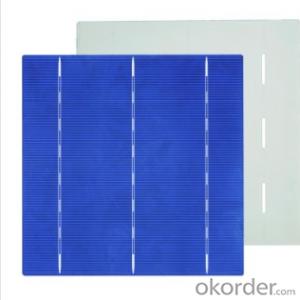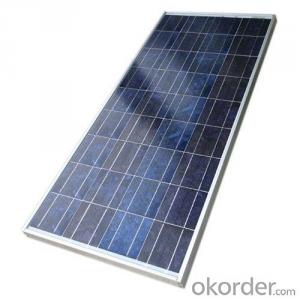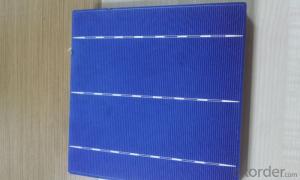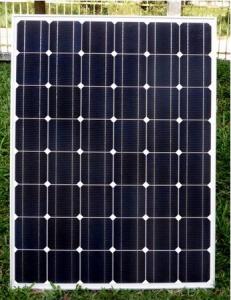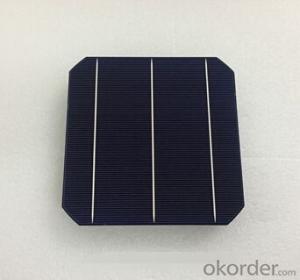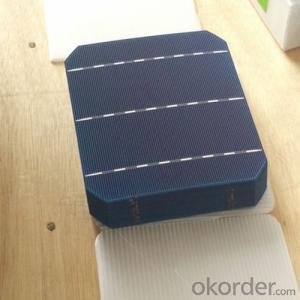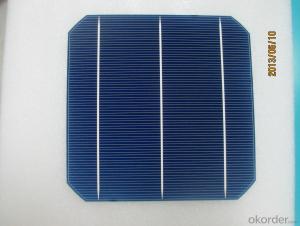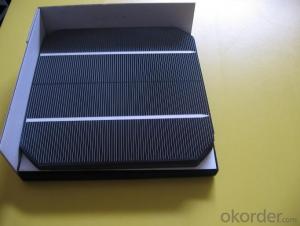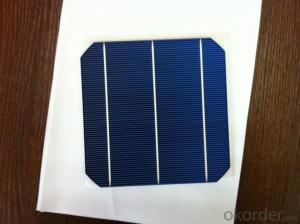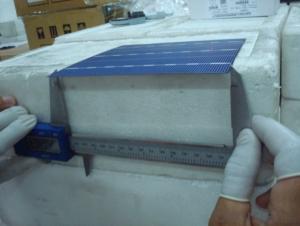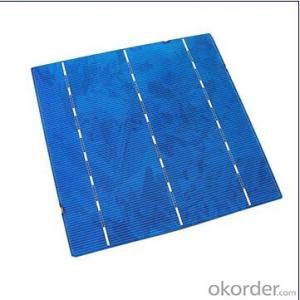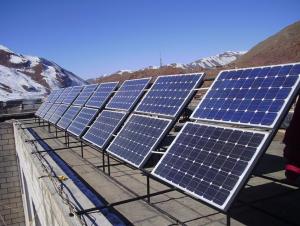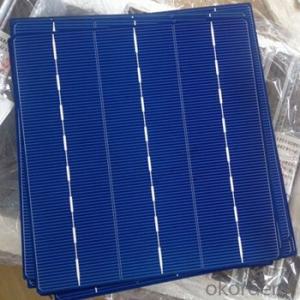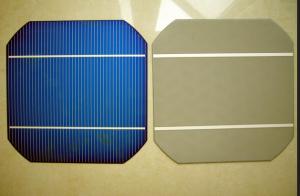Monocrystalline Solar Cells for Sale - 156mmx156mm Mono Solar Cell
- Loading Port:
- Shanghai
- Payment Terms:
- TT OR LC
- Min Order Qty:
- 500 PCS
- Supply Capability:
- 10000000 PCS/month
OKorder Service Pledge
OKorder Financial Service
You Might Also Like
1.Product Description:
Monocrystalline solar cells are currently the fastest developing a solar cell, its structure and production process has been finalized, the products have been widely used for space and ground. Such solar cells with high purity silicon rods as raw materials. Silicon rods, material performance indicators in order to reduce production costs, and now solar terrestrial applications such as the use of solar grade somewhat relaxed. Some semiconductor devices can also be used for processing materials and discard the head and tail of silicon materials, solar cells after re-drawn into a dedicated silicon rods
2.Specifications Of Mono Solar Cell 156mm
1.Mechanical data and design
Format | 156 mm × 156 mm ± 0.5 mm |
Thickness | - 210 μm ± 40 μm |
Front(-) | 1.5 mm bus bars (silver),blue anti-reflection coating (silicon nitride) |
Back (+) | 2.5 mm wide soldering pads (silver) back surface field (aluminium) |
2.Temperature Coefficient of Cells
Voc. Temp . coef.%/K | -0.35%/K |
Isc . Temp . coef.%/K | +0.024%/K |
Pm. Temp. coef.%/K | -0.47%/K |
3:PACKING :
Packaging & Delivery Of Mono Solar Cell 156mm | |
Packaging Detai | Packaging Detail:Export Carton and Pallet or under customer request. |
Delivery Detail:10-20days | |
4.IMAGES:
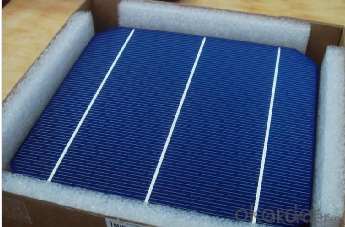
5.FAQ:
WHAT'S YOUR ADVANTAGES OF YOUR PRODUCTS?
1: high quality cell, Level A cell
2: Dimensione:125*125mm Diagonal:150mm / 165mm
Dimensione:156*156mm Diagonal:200mm
3: Qualified certification: TUV,CE certification.
4: Warranty: five years for whole unit
- Q: How do solar cells compare to fossil fuel-based power generation?
- Solar cells have several advantages over fossil fuel-based power generation. Firstly, solar cells generate electricity by harnessing sunlight, which is a renewable and abundant source of energy, whereas fossil fuel-based power generation relies on finite and polluting resources like coal, oil, and gas. Additionally, solar cells have a significantly lower environmental impact as they produce no greenhouse gas emissions during operation. Solar cells also require less maintenance and have a longer lifespan compared to fossil fuel power plants. However, solar cells have limitations such as intermittent power generation and higher initial costs, but advancements in technology are addressing these challenges. Overall, solar cells offer a cleaner, more sustainable, and increasingly cost-effective alternative to fossil fuel-based power generation.
- Q: How to define the poly solar cells as the A Grade one?
- A Grade poly solar cell is used in large power plant while B grade is for consumer usage for daily life
- Q: What are the advantages of monocrystalline silicon and polycrystalline silicon in solar power?
- single The wafer hot process time can be completed in less than one minute, using the process to make a cell conversion efficiency of more than 14% on 100 square centimeters of polysilicon wafers. It is reported that the current 50 ~ 60 micron polysilicon substrate produced on the battery efficiency of more than 16%. The use of mechanical groove, screen printing technology in the 100 square centimeter polycrystalline efficiency of more than 17%,
- Q: How do solar cells perform in different climates?
- Solar cells can perform well in various climates, although their efficiency may vary. In regions with abundant sunlight and higher temperatures, solar cells can generate more electricity. However, extreme heat can slightly reduce their efficiency. In colder climates, solar cells can still produce electricity, although their output may be lower during winter months due to reduced sunlight. Overall, solar cells can function effectively in different climates, but the specific performance may depend on the local weather conditions.
- Q: What is the typical warranty for solar cells?
- The typical warranty for solar cells usually ranges from 10 to 25 years.
- Q: Anybody ever heard of solar roll flexible solar panel?
- Yes, I did. The solar cell has some specifies as below: Roll able amorphous thin-film solar cells for effective low-light performance Reverse flow protection Fluor polymer construction for extreme durability Link multiple like-units together for even more output
- Q: Can solar cells be used for off-grid living?
- Yes, solar cells can definitely be used for off-grid living. They provide a clean and reliable source of renewable energy, allowing individuals to generate their own electricity without relying on the traditional power grid. Solar cells can be used to power various appliances, lighting systems, and even charge batteries for nighttime usage. This makes solar energy an ideal solution for those living in remote areas or seeking a sustainable and independent lifestyle.
- Q: How do solar cells affect the local ecosystem?
- Solar cells have a minimal impact on the local ecosystem. Unlike traditional energy sources, solar cells do not produce harmful emissions or pollution during their operation. Additionally, solar farms can be designed to coexist with the natural environment by incorporating measures like landscaping and wildlife-friendly habitats. Overall, solar cells contribute positively to the local ecosystem by promoting clean energy and reducing carbon emissions.
- Q: Can solar cells be used to power water pumps?
- Yes, solar cells can be used to power water pumps. Solar cells convert sunlight into electricity, which can be used to power various devices, including water pumps. This is commonly done in remote areas where there is no access to electricity grids or in situations where using solar energy is more cost-effective and sustainable.
- Q: Can solar cells be used for powering drones?
- Yes, solar cells can be used for powering drones. Solar-powered drones utilize photovoltaic cells to convert sunlight into electricity, which can then be used to power the drone's motor and other systems. This renewable energy source allows for longer flight times and reduced reliance on traditional fuel sources.
Send your message to us
Monocrystalline Solar Cells for Sale - 156mmx156mm Mono Solar Cell
- Loading Port:
- Shanghai
- Payment Terms:
- TT OR LC
- Min Order Qty:
- 500 PCS
- Supply Capability:
- 10000000 PCS/month
OKorder Service Pledge
OKorder Financial Service
Similar products
Hot products
Hot Searches
Related keywords
